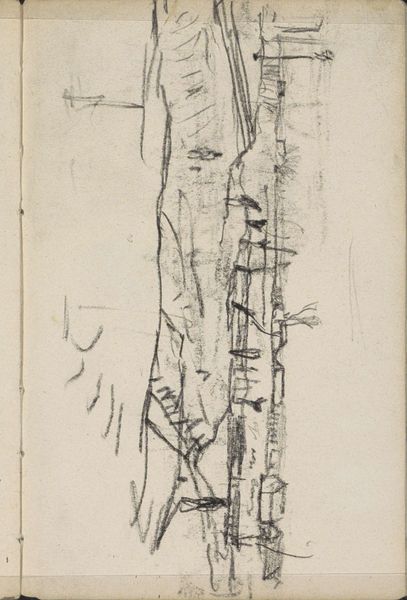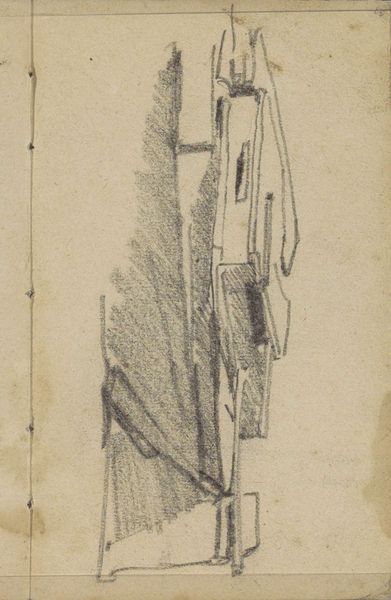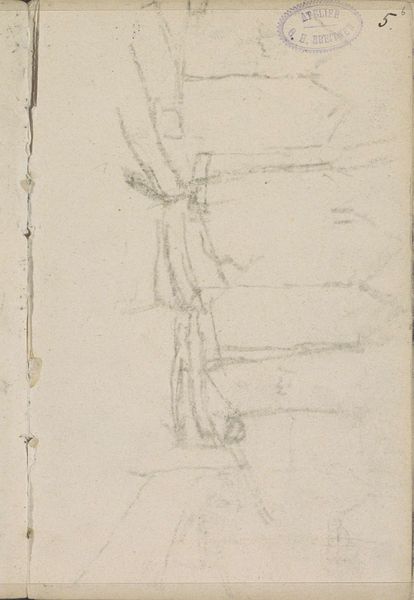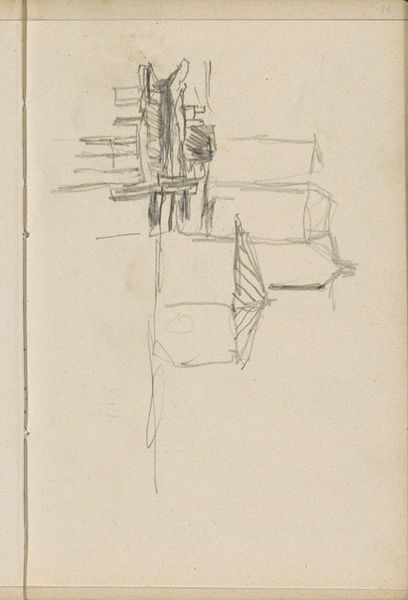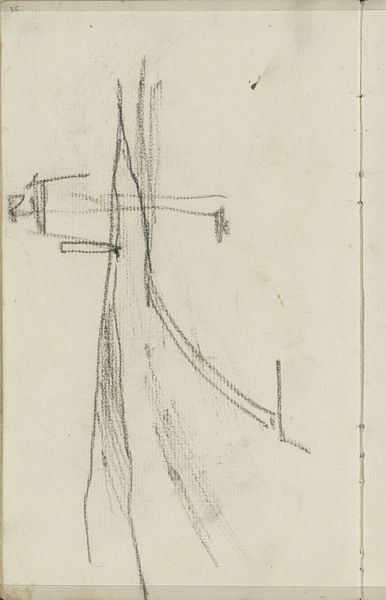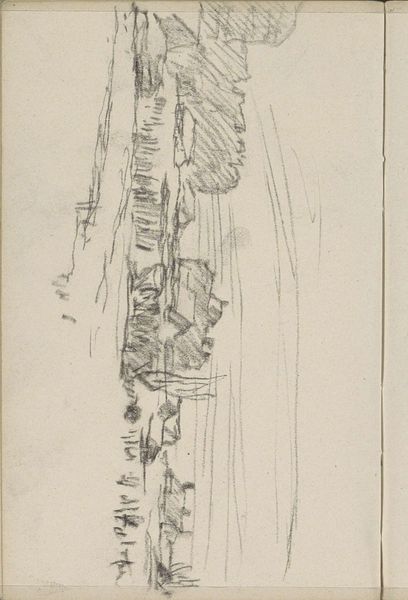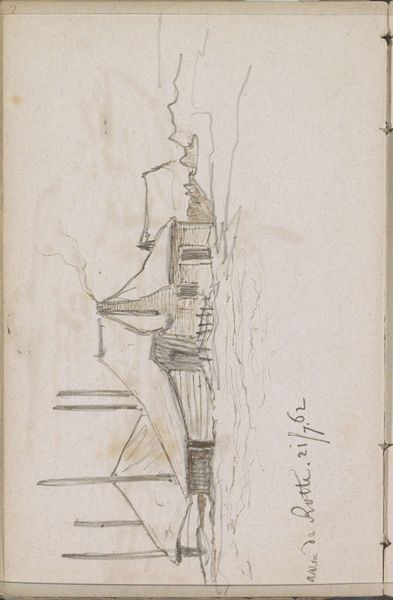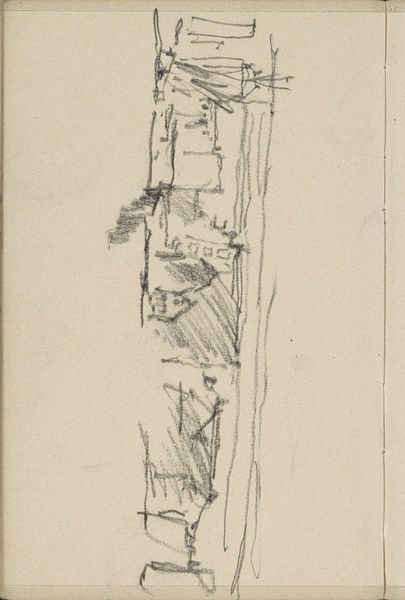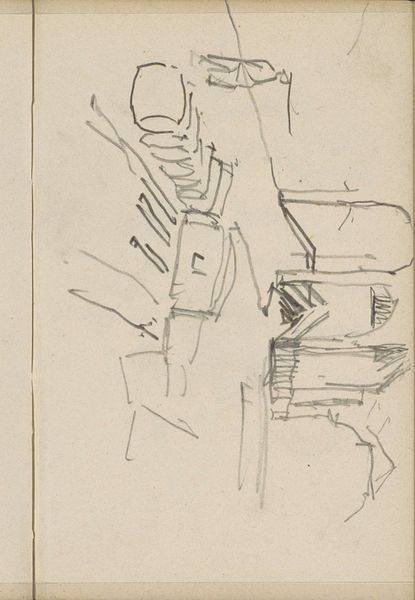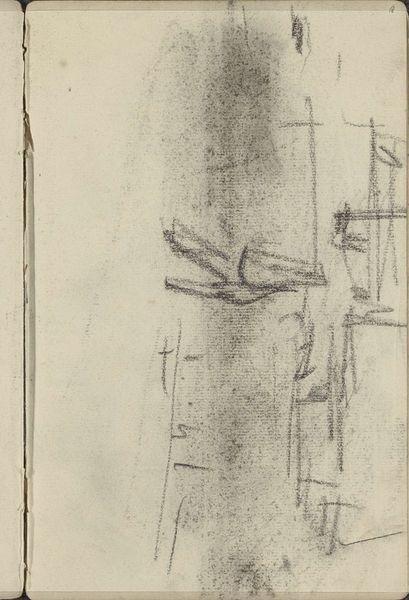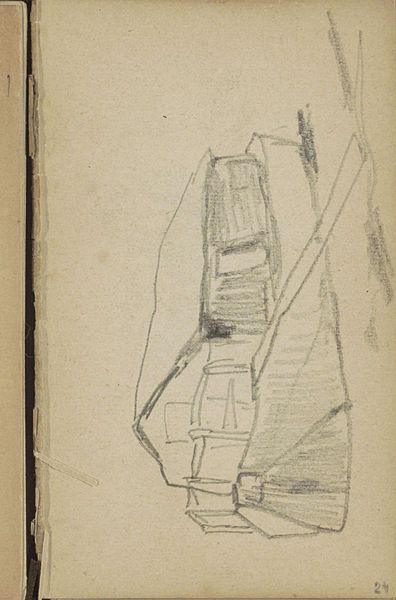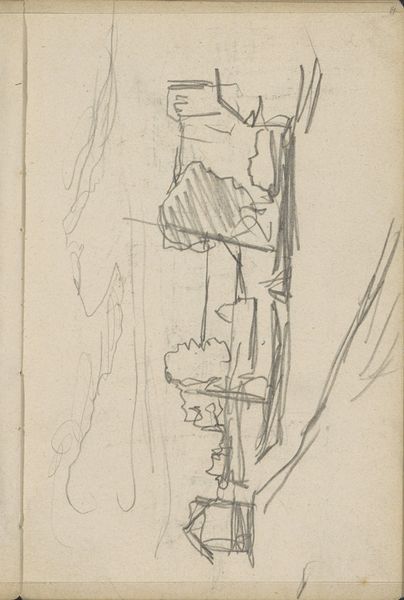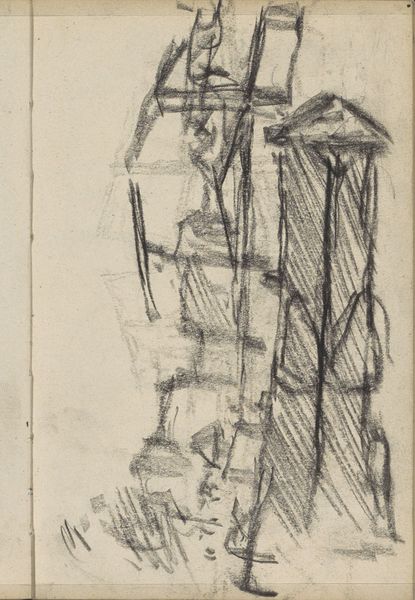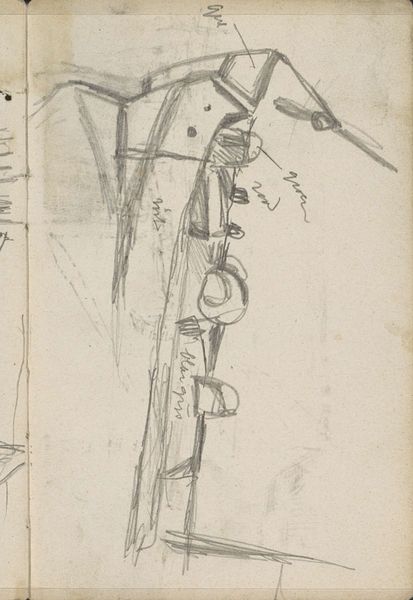
Bebouwing aan de rand van het toekomstige Oosterpark te Amsterdam 1888
0:00
0:00
georgehendrikbreitner
Rijksmuseum
drawing, pencil
#
drawing
#
impressionism
#
pen sketch
#
landscape
#
pencil
#
cityscape
Copyright: Rijks Museum: Open Domain
Curator: This pencil drawing, "Bebouwing aan de rand van het toekomstige Oosterpark te Amsterdam," created by George Hendrik Breitner in 1888, captures a fascinating glimpse into a city in transition, now residing at the Rijksmuseum. Editor: It's stark. Sparse lines giving the barest bones of architectural structure. Almost bleak in its simplicity. What do you see formally? Curator: Note the deliberate use of line. Breitner uses rapid, almost frantic marks to capture the essence of buildings under construction. The diagonal lines lend a sense of dynamism, suggesting movement and change. The composition, though seemingly unfinished, is meticulously structured; each stroke adds to the visual narrative of urban development. It begs the question, is the white space a metaphor? Editor: That incompleteness speaks volumes about urban growth, doesn’t it? Amsterdam at this time was a rapidly expanding city. Think about the social context: industrialization was booming. This sketch becomes a record of the changing urban landscape, showing a city forging its future while wrestling with the practical implications of all that progress. It hints at both possibility and perhaps displacement, which were central to the debates within Dutch society. Curator: The very fact that it's a sketch underscores this feeling of immediacy. It's less a carefully considered "statement" than a fleeting impression, which allows us access to the raw energy of a city in motion. But what does it mean that he chose a traditional medium to portray it? Was it more familiar than any modern media for expressing urban transformations? Editor: Perhaps. By depicting construction in pencil, a medium associated with preparatory sketches rather than finished artworks, Breitner acknowledged the provisional state of the buildings, but moreover he involved his readership into the scene that was being created and developed. This contrasts to photography as a common medium to show buildings in transition in their urban environment, not for all but as evidence, information, rather than reflection and creation. Curator: It makes you ponder about the artist's intentions and the cultural weight these decisions carry, which in turn makes the viewer contemplate their perspective. Editor: Absolutely. Breitner presents a layered view of a developing society, ripe with the complexity and drama inherent in social transformations.
Comments
No comments
Be the first to comment and join the conversation on the ultimate creative platform.
